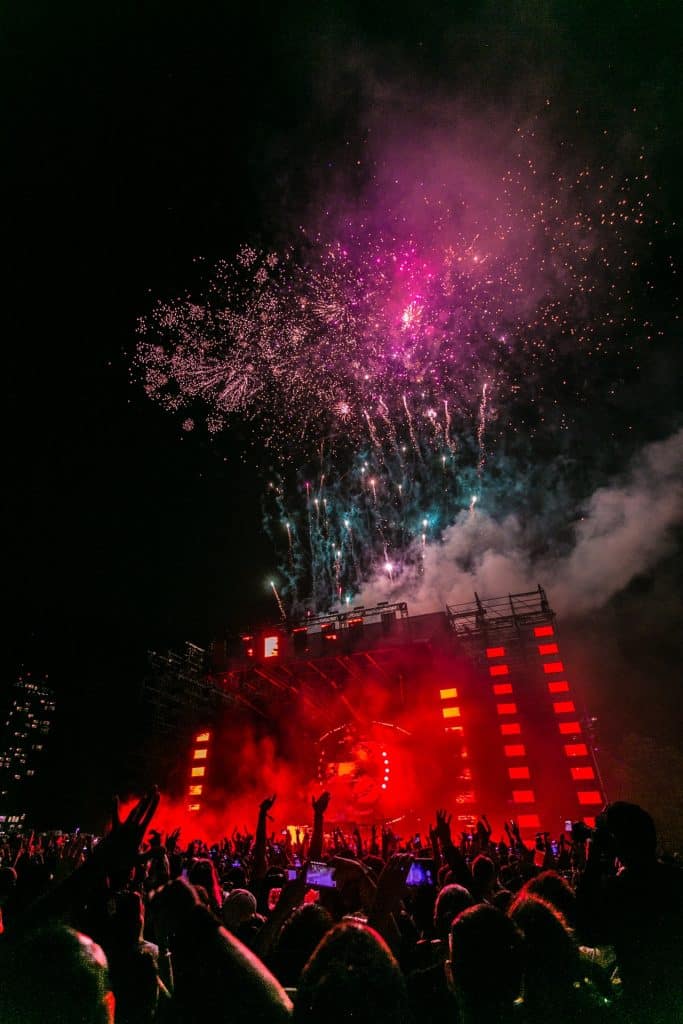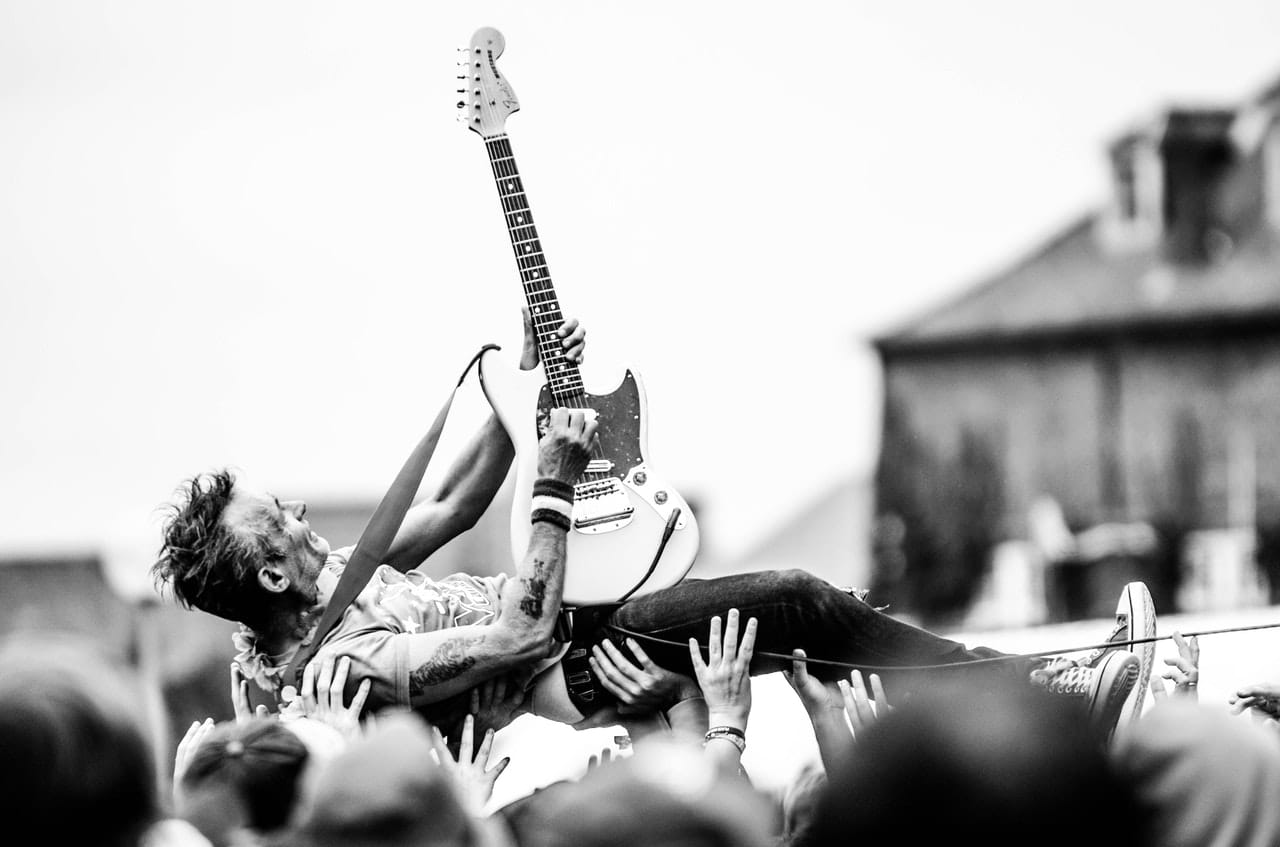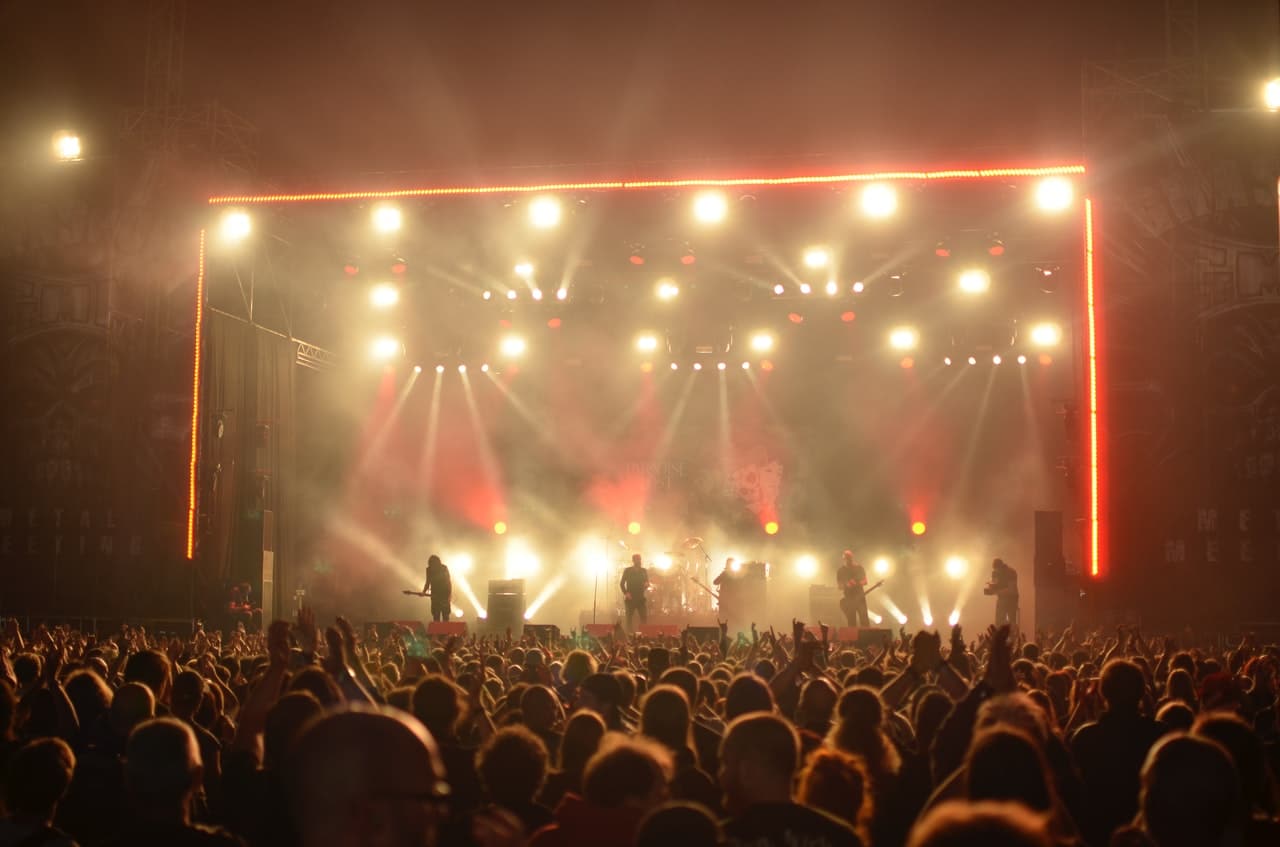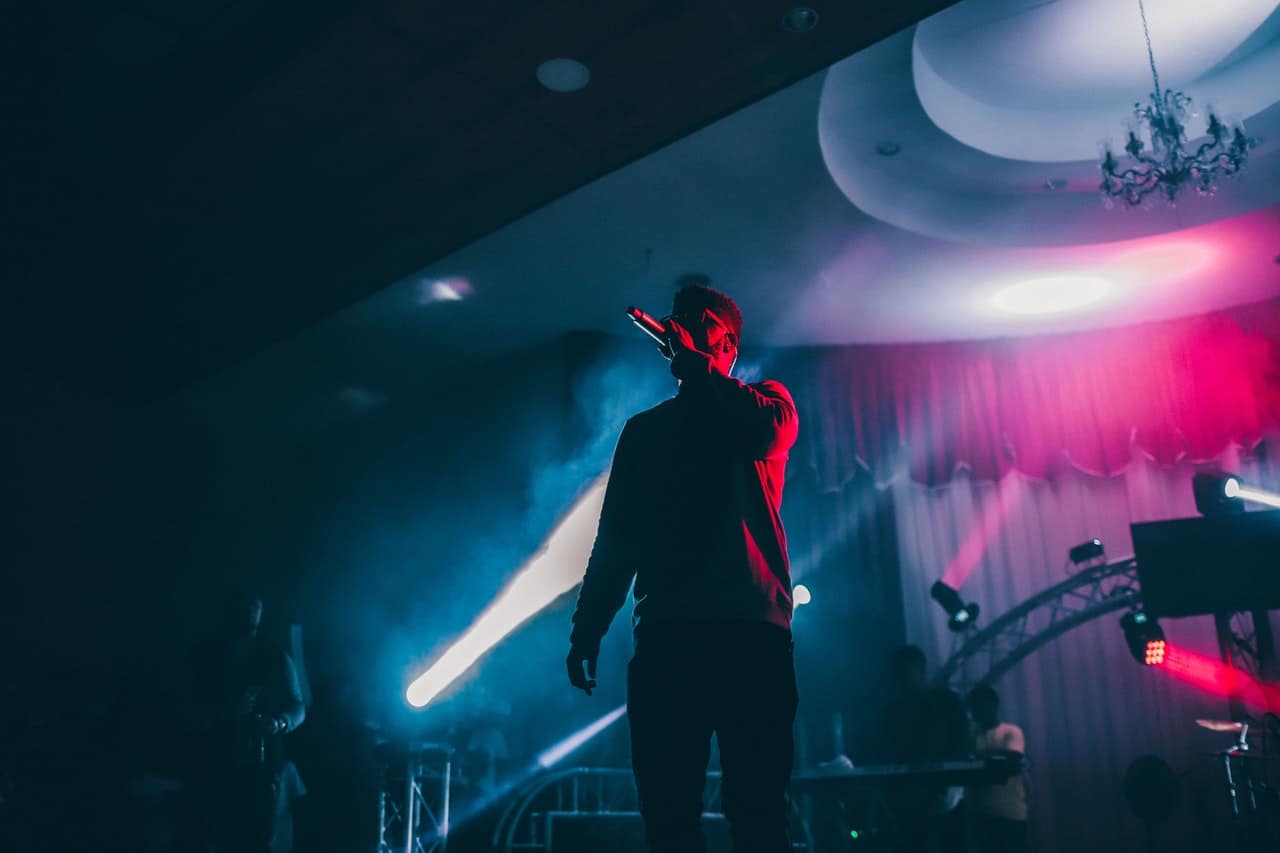The Ultimate Guide to Concert Photography
How Do You Become a Concert Photographer?
To become a concert photographer, you’ll want to start off by shooting small locals shows, getting photo passes to access large shows, network with different publications, start a photography blog to showcase your work, and licensing your photos.

Capturing a concert or live show can be an exciting job, getting up close and personal with a performer or a band. Feeding off the energy of the crowd, concert photography is all about timing, technique, and a bit of creativity to get the perfect shot. Maybe you’re a music lover interested in getting into concert photography, or perhaps you’re a seasoned shooter looking to diversify your skillset.
Becoming a music photographer can be competitive, and starting out can be a challenge as you try to land concerts or shows to shoot. Many concert photographers build their client list up over time, using their music photography portfolio to help get their next job. Finding the right website template for your portfolio, as well as how to lay out your work, can be a bit daunting, particularly for beginner concert photographers.
Let’s dive into everything you need to know to succeed in concert photography, from the best camera, lenses, and light setup for concerts to creating an online portfolio website to make it easier for you to impress potential clients. Check out our concert photography tips to help you grow your career one gig at a time.
How Do You Become a Concert Photographer?

Now that you have a better sense of the gear and portfolio needed to do well in concert photography, you may feel ready to launch your career. But people don’t simply fall into the business and land gigs right away. Here are a few concert photography tips to help you get your next job:
Shoot Small, Local Shows
One of the best ways to get your career going is to focus on smaller shows in your area. Check your local show listings to see which bands are playing and contact the venue or the booker to see if they need a photographer. Chances are, you will have less competition when you go for local shows and it can be a great way to get your name out there.
Going for smaller shows also means you have more opportunities to take a lot of great images, which you can then include in your online portfolio. You can use your coverage of small, local shows to raise your profile and hopefully land bigger gigs.
Snag a Photo Pass
Photo passes are the best way to gain access to larger shows and venues as a shooter. They are often given out by a publicist or a booker to specific photographers so they can cover the show, moving around the stage and the venue with ease. A pass will also give you access to the photo pit, which is often situated in an ideal spot for getting great shots.
It’s usually easier to get a photo pass if you work for a publication, as the publicist will trust that the images will be published somewhere for the press. They are often approved and given out a few days before a show so you can prepare for the shoot.
Network with Publications
After you’ve covered a few local shows, you may realize your next best option is to try to land work through a publication, such as a local paper or an online magazine. Contact these outlets to see if they’re in need of concert photography, particularly if you notice they seem a bit lacking in that department. Be sure to share your online portfolio with them to boost your chances of landing the job.
Some photographers decide to start their own publications as a way to carve their own path and get their foot in the door. If so, you may decide to collaborate with other photographers, artists, and creative people to get your publication off the ground.
Start a Photo Blog
Blogging about your experience as a concert photographer can help you stay active online and get used to sharing your work. Maybe you do a concert photo a week with a short write up to highlight your best shots, or keep a rotating list of blog post ideas so you’re never short on content.
Most website builders will make it easy for you to host a blog on your site as a separate page and update it regularly. Be sure to share your blog posts through your social media accounts to boost traffic to your website, and create related posts on your social media so you stay current and visible online.
Research the Copyright to Your Images
Good concert photography can be a hot commodity, especially if you take shots of a well-known musician or band. Though you may not be able to use concert photography for stock photos, as they are often very specific images, you can discuss the rights to your work with any publications or bands you work with.
Licensing your photos is often done as part of an agreement you may have with a publication to ensure your rights to the image are protected and you are compensated properly. Determining things like rights reserved for concert photography should be a discussion you have with anyone who buys it, as you want to ensure you are earning the value of your work.

How Do You Photograph Concerts?
Concerts can be notoriously tricky to shoot, as there are often stage lighting, musicians, and venue limitations to consider. However, you can end up with some incredible shots using these concert photography tips:
Use Manual Camera Mode
Your digital SLR camera will have an aperture priority mode and a manual camera mode. Though it may be tempting to use aperture priority mode and let the camera do most of the work for you, this setting doesn’t give you the same control manual shooting mode does. Often when you shoot concerts, you need to be responsive to your environment and adjust your camera settings to fit a particular shot or angle. Using manual camera mode will give you the flexibility to pre-set your camera settings and then tweak them as you work.
Start with the Lowest Aperture Number
One of the biggest challenges for concert photography is low light conditions, as you will likely be shooting bands in a dark venue. To ensure your photos aren’t plagued by low light issues, set your aperture to the smallest number on your lens, such as f/1.8. This will allow the most amount of light to enter your sensor so you can shoot with the lens wide open.
Keep in mind you will likely need to adjust your aperture setting as you move in and out of specific lighting conditions, such as strobes or flashes on stage during a show. But starting at the lowest setting gives you the space to play around with it as needed and not worry about low light negatively affecting your shots.
Go for a Fast Shutter Speed
Concert photography requires you to move around the stage and venue a lot as you try to capture the bands and the crowd. You also need to respond to performers as they sing, dance and strut the stage. Shutter speeds of 1/250 or faster will ensure you can capture movement without getting blurred images. This way, you can shoot the energy of the performer and the crowd, freezing the action correctly with your camera.
Keep in mind you will need to adjust your shutter speeds based on the setting and the stage performers. You may also tweak these settings to get crowd shots. If you notice the venue has low light but the band isn’t as active on stage, you could probably switch to slower shutter speeds of 1/250 or less and still get crisp, clean images.
Use a High ISO Setting
The ISO on your camera determines how sensitive your camera is to light. A higher ISO results in more sensitivity to light and allows your camera sensor to respond faster to the light. A high ISO is key for shooting in low light, as it will help to ensure your images are lit properly and don’t come out too dark or blurred.
Start with an ISO of 1600 during a concert and bump it up to no more than ISO 3200 to counteract low light as needed. Keep in mind that a higher ISO will result in more noise or grain in your concert photographs. But it’s usually better to get some grain and a great image, rather than a blurred or badly lit shot. You can then adjust the grain in post-production using editing tools like Adobe Lightroom or Photoshop.
Do Spot Metering
Spot metering is a setting you can use in your digital camera. It’s a convenient tool that takes a light reading just for the center of your viewfinder. This is handy for concert photography, as you will often be shooting bands lit by a spotlight and the rest of the stage is dark. You can use spot metering mode to place the performer’s face in the middle of your viewfinder to get the correct exposure.
Spot metering can help you avoid low light issues like overexposed faces, which is a common issue when the background is dark and a spotlight is used.
Avoid Flash Photography
Most venues don’t allow you to use flash photography, and for good reason. Not only does it annoy the bands or performers, blinding them as they try to perform. Flash photography also doesn’t look great, as it will overexpose faces and result in an unbalanced image. Addressing low light conditions with your camera settings, rather than a flash, will ensure you get a great looking photo every time.
Always Shoot RAW
Shooting in RAW, rather than JPEG, will give you the flexibility to adjust any issues in your images later during post-production. Editing tools like Adobe Lightroom or Photoshop work best on RAW images, allowing you to address low light conditions, grain, and other imperfections easily. Make sure your camera is always set to shooting in RAW so you can edit them later and ensure they look their best.
What is the Best Camera Gear for Concert Photography?
Often, photographers will stick to a basic camera and lens set up to capture concert photographs. This includes:
A Digital SLR Camera
Shooting concerts is a fast-paced gig, where you have to respond quickly to the musicians, the crowd, and the vibe of the venue. You will need a camera that can take a lot of high quality images and store them quickly so you can shoot on the go during a show. A digital SLR camera will also have features like light and shutter speed settings that you can adjust easily, depending on the type of concert photography you’re looking to get.
Though shooting on film with a manual camera can result in some cool looking images, it can be challenging to shoot a lot of different images quickly with a manual camera. When shopping for gear for concert photography, invest in a digital SLR camera like the Nikon D700 or the Canon 60D, as they are high-performing and versatile, able to handle the lenses you need to take great concert photos.
A 50mm Lens
This lens is a great long term investment for concert photography, as it is able to capture a lot of different angles quickly and efficiently. A 50mm lens is a workhorse and will fit well with your digital SLR camera. It’s also a fairly affordable lens and won’t be too out of reach financially for new shooters.
Most concert photographers will go for a 50mm F/1.4 lens or a 50mm F/1.8 lens in the same brand as their camera body, such as a Nikon D700 with a Nikon 50mm F/1.4 lens.

Want to build a concert photography portfolio?
Build an online portfolio website in minutes with Format.
How Do You Build a Concert Photography Portfolio?
Showcase Your Best Work
Your concert photography portfolio should really wow visitors and highlight exactly how talented you are. Cluttering up your website with work that is just okay or good enough just won’t cut it in the competitive world of concert photography. Make sure you are selective about the work you showcase in your portfolio website so you put your best foot forward.
Perhaps there is a series of low light band images you’re proud of, or a set of rowdy concert photos you’d like to highlight. Including your best work will ensure your portfolio is impressive and highlights your unique skills, as well as what you can bring to every concert or show.
Include High Quality Images
Blurred, badly lit images won’t impress anyone, let alone potential clients! Only use high quality images of your work on your portfolio to keep it professional and clean. The images on your portfolio should be web-quality, properly edited, and processed so they load quickly for visitors. You can learn how to edit the photos yourself as part of post-production to ensure they look their best.
Create an Eye-Catching Portfolio Page
Your portfolio page is arguably the star of the show. It acts as your visual CV and shows visitors your skills in action. Include any concert photography you’re proud of on this page, from images of musicians to live show photos to impressive crowd shots.
Depending on the website platform you use for your website, you should be able to lay out your portfolio page using different templates or themes. Maybe you opt for a grid layout for your portfolio page, showcasing your concert photography the main page that a site visitor will see. Or you may decide on a scrolling layout, where your best looks appear in a tidy row or stacked on top of one another.
Include an About Me and Contact Page
Your website isn’t just about sharing your great concert photography. It’s also a place where you can share your backstory with visitors, including who you are and why you are so passionate about shooting shows and bands. On your About Me page, you can note your educational background and work experience, such as musicians you’ve shot or shows you’ve covered. Some portfolio websites will also include an artist statement, which highlights how you approach your work and why you are passionate about what you do.
You should also make sure you include a contact page, with your email address, so potential clients can contact you easily. Most website builders make it easy for you to create a contact form that goes straight to your email so you can connect with visitors to your online portfolio.
Make Your Portfolio Website Easy to Use
Visitors to your makeup portfolio site should be able to navigate to each page or section with ease. Keep the user experience in mind as you put your site together and ensure it is not confusing or cluttered. Check that the content is easy to click on and open, ideally within one to two clicks. Visitors can get turned off by a poorly organized site that is not intuitive or clear, and disinterested visitors could mean lost clients or gigs. Test your site before it goes live to confirm it is accessible for visitors so they’re encouraged to stay and check out what you have to offer.
Update Your Portfolio Regularly
Make sure you update your portfolio with your latest concert shots or show images to ensure it stays fresh and current. Stale content can discourage visitors from clicking through your site, and it can send a message that you aren’t working or hustling as much as you might need to as a concert photographer. Weekly or monthly updates of your website can really boost your site’s content and keep your portfolio looking fresh.
How Much Does a Concert Photographer Make?
As a concert photographer, you will likely start out working an hourly wage of around $20-$25 an hour. Depending on how many gigs you land, you could earn $39,000 USD on average, and work your way up to a higher salary of $66,300 USD as you gain more experience and more clients.
This is why it is so important as a music photographer to hustle and network for jobs and impress potential clients with an incredible photography portfolio of your work.
Ready to Create a Concert Photography Portfolio?
With our comprehensive guide full of concert photography tips, you should now be ready to create a portfolio of your best shots, and take your career to the next level. When you build your website, go for a web-builder like Format, which offers a variety of website templates for creatives, as well as add-ons like a blog to share your artistic journey with others and an online store to sell prints of your designs.